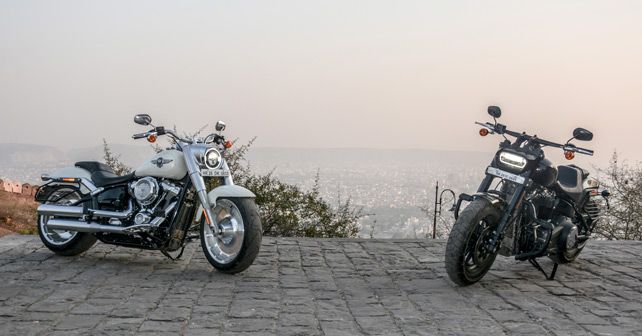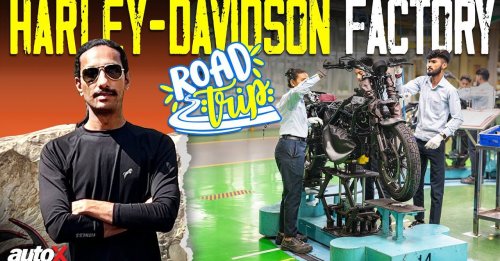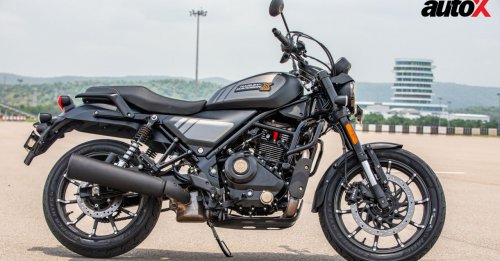The Fat Bob and Fat Boy are prime examples of the new-age Softail family – they’re light, sporty and have better lean angles. Cue a long road trip…
It’s quite uncanny how life comes full circle. It was exactly seven years ago when I was introduced to the world of Harley-Davidson. As we rode across Rajasthan, I was lucky enough to ride their entire range that time.
In the chilly January of 2018, we managed to get our hands on the latest Fat Boy and Fat Bob. And, yes, you’ve guessed right – we rode them to the ‘Land of the Kings.’ The iconic Fat Boy is one of my favourite easy riders and my second favourite Harley after the now defunct XR1200. For those who’ve never had the privilege to ride it, the XR1200 was the antithesis of the laid-back Harley-Davidsons that we see nowadays. It was not only the fastest and the most powerful Sportster, but also the best handler ever to have emerged from the Milwaukee stable and could put many of its Japanese counterparts to shame. Coming back to the all-new 2018 Fat Boy and Fat Bob, I had heard a lot of praise for the new and improved Soft Tail family, thanks to my colleague Jared who had ridden the 2018 line-up last September in Spain. But it sounded too good to be true, so we decided to take the Fat Bob and Fat Boy for a “short” trip to Pushkar, via Jaipur. The idea was to find out how they actually behave on our roads.
I must admit that the new Fat Bob looks incredibly sinister, with its all-black theme, and oozes a distinct bad boy attitude. Harley-Davidson decided to go against its ethos and intentionally deprived the Fat Bob of any chrome garnishing. The Fat Bob is one buffed up street brawler with its twin upswept exhaust, all-black cast aluminium wheels with bulging tyres and an ‘in your face’ horizontal LED headlamp. It has both the look and the attitude on a bike born to rule the streets.
What the Fat Bob lacks in finesse, the Fat Boy more than makes up for with its classic design and traditional chrome silhouette. The chunky chrome dome oval-shaped LED headlight looks absolutely gorgeous and beautifully balances the retro-futuristic image of the new Fat Boy. And if the Fat Bob’s tyres are impressive, the Fat Boy’s wider 160mm front and 240mm rear rubber is simply mindboggling. It also boasts of typically huge disc wheels, which H-D calls ‘Lakester,’ but, sadly, they don’t come with the legendary bullet hole design. I may sound like a rambling lovesick teenager, but you really have to see them to actually understand the reason behind my rambling.
Magic of the Milwaukee-Eight
Anyways, when time came to begin our road trip, as tempted as I was to ride the Fat Bob first, I nonetheless opted for the Fat Boy. Earlier, Jared had warned me to take it easy with the throttle, as it doesn’t have the typical lazy pick up of the previous models. Even though I thought that he was exaggerating, I decided to exercise caution – better to be safe than sorry, as they say. As I twisted the throttle gently, the 1,745cc Milwaukee-Eight 107 responded instantly without any lag. Weighing a shade over 320 kilograms, and still being quick on its heels made it, initially at least, a bit unnerving. But once I got the hang of it, I began appreciating all the hard work that went in to the making of this engine. Harley-Davidson has, once again, managed to do wonders – as the new chassis is 14 kilograms lighter than the older version. Honestly, I’d never imagined that a Fat Boy could be so agile and easy to ride.
As we rode past Manesar, the roads were in a condition that would have caused havoc with any other bike, but not the Fat Boy – it calmly sailed through without a whimper. I could feel the new Showa Dual Bending Valve (SDBV) fork – from the FL touring line – at work, providing excellent linear damping characteristics and suppressing the irregular undulations of the road. I could literally feel the new Fat Boy’s much-improved ride quality, and it provided far better control over the cruiser.
With straight, wide and open roads at our disposal, the Fat Boy felt right at home as we cruised over the three-digit mark. Expecting to feel the usual vibrations, I was pleasantly surprised when all I felt were some minor tremors. I had to slow down to check if I was riding the famous Fat Boy or if I’d picked up some other bike by mistake. Harley-Davidson has really upped their game with the new model, for it’s truly a smooth ride – almost like a hot knife through butter. The secret sauce here is the dual counter-balancers that manage to tame the vibrations from the Milwaukee-Eight 107 V-twin.
As much as the lazy-boy riding position and the comfortable seat continued to pamper me, I decided to switch to the Fat Bob – or, as H-D likes to call it, their ‘tarmac-eating machine.’ I was more than eager to find out if that’s purely because of how it looks – or if it actually now possesses some serious grunt.
Even though the Fat Bob looks like a street or a performance-oriented bike, it still has a traditional cruiser-like riding stance with the foot pegs placed in front. It also has a higher seat as compared with the Fat Boy. With the aluminium bars slightly curved towards the rider, the riding stance is straight but not stretched out like the Night Rod.
Like chalk and cheese
Both motorcycles are powered by the same engine, even though the Fat Bob boasts of 145Nm of torque at 3,250rpm and the Fat Boy of 144Nm at 3,000rpm. So, on paper, they’re virtually the same – but, in reality, they’re like chalk and cheese. The Fat Bob has an aggressive response and can throw you off balance. It provides an eager push at low speed and seems to be in hurry to sprint to the three-digit mark. It’s like a speed demon on the road that wants to push you around. But I do have some reservations about its seat. Initially, it felt comfortable with great lower back support, but, with time, it grew quite uncomfortable – and, on a long road trip, it’s not the ideal companion.
Once we entered Jaipur, I swapped bikes again as the Fat Bob’s seat was getting very uncomfortable for me. Getting back to the Fat Boy was a joy, as it was the most supportive seat I’ve ever come across on a bike. The only hitch was that this cruiser is not really the best to ride on roads chock-a-block with traffic, as it’s weight is actually quite telling in this scenario. The Fat Bob, on the other hand, had no problem negotiating the start-stop traffic. I could see Shivank easily flicking it through the rush-hour jam. Nevertheless, we finally reached our destination for the night, and got some much-deserved rest.
The next day, we headed to Pushkar. With temperatures around 8-9 degrees Celsius, the early morning ride was nothing short of freezing – not to mention the painful cold blasts of air every time a truck crossed us on the Jaipur-Ajmer highway. The distance from Jaipur to Pushkar is hardly 150 kilometres, but, due to the cold weather, the ride felt a lot longer. That said, after finding out how planted and steady both bikes are on the highway, we decided to test them on the winding roads to Pushkar to see just how the new light and rigid chassis of these bikes behaves.
Once we exited the highway, we were greeted by broken roads. And it’s then that we realised the true extent of stiffness provided by the inverted 43mm forks and rear monoshock of the Fat Bob as it kept crashing into potholes. It actually reminded me of the way the Triumph Bonneville Bobber behaved. The Fat Boy, on the other hand, rode like a Camel through a desert. Road conditions simply failed to cause any problems at all for the Fat Boy. The only thing we had to keep in mind was its low ground clearance. Finally, the roads improved, and we opened the throttle and gained some speed.
Not afraid of the twisties
As we entered the twisties, the Fat Bob showed off its handling capabilities. Even though its riding stance isn’t the best to lean in while chasing an apex, it did manage to remain stable thanks to the wide tyres. The Fat Bob was precise and confident, even while taking tight bends at slow speeds. The best part was that not even once did the foot pegs scrape the tarmac. The Fat Boy, on the other hand, was hardly a slouch. In fact, it was quite confident while taking sweeping bends. The new tubular steel double cradle frame is 65% stiffer, a lot lighter as it uses 50% fewer components and its 34% more rigid than its predecessor. So, with a more precise steering and an increased lean angle, the Fat Boy was able to own turns like a boss, even though its weight did restrict its movement a bit. Also, I had to be careful of scraping the footboards, as they were just too big. Honestly, though, I shouldn’t be complaining at all because it really is a true cruiser.
My experience with both bikes left me quite impressed. They’re lighter and feel very agile. The Milwaukee-Eight 107 engines are refined and responsive, and the build quality of the motorcycles is now at par with their competitors. The Fat Boy has a classic look and feel, with smooth acceleration and comfortable ride quality. Riding it can actually be quite a therapeutic experience. The Fat Bob, on the other hand, is like a bad boy rock star that likes to stamp his authority on the crowd. It has an aggressive style and nature. It pushes the envelope when it comes to the handling too, and comes with an engine that packs a powerful punch.
Both bikes are great, but our heart tipped more in favour of the outlandish Fat Bob – as it’s the closest bike in the range to the XR1200.
- Harley-Davidson Fat Bob
- Harley-Davidson Fat Boy
Engine: 1,745cc / V-Twin
Transmission: 6-Speed
Torque: 145Nm @ 3,250rpm
Price: Rs.14.01 lakh (Ex-showroom)
X-factor: A sports power cruiser that’s easy to ride in the city and fun in the twisties.
| Pros • Dark sinister look • Sporty performance | Cons • Uncomfortable seat • Stiff suspension |
Engine: 1,745cc / V-Twin
Transmission: 6-Speed
Torque: 144Nm @ 3,000rpm
Price: Rs.17.51 lakh (Ex-showroom)
X-factor: This showstopper of a cruiser now offers instant throttle response and excellent build quality.
| Pros • ‘Retro-futuristic’ look • Refined & responsive engine | Cons • Low ground clearance |











































Write your Comment